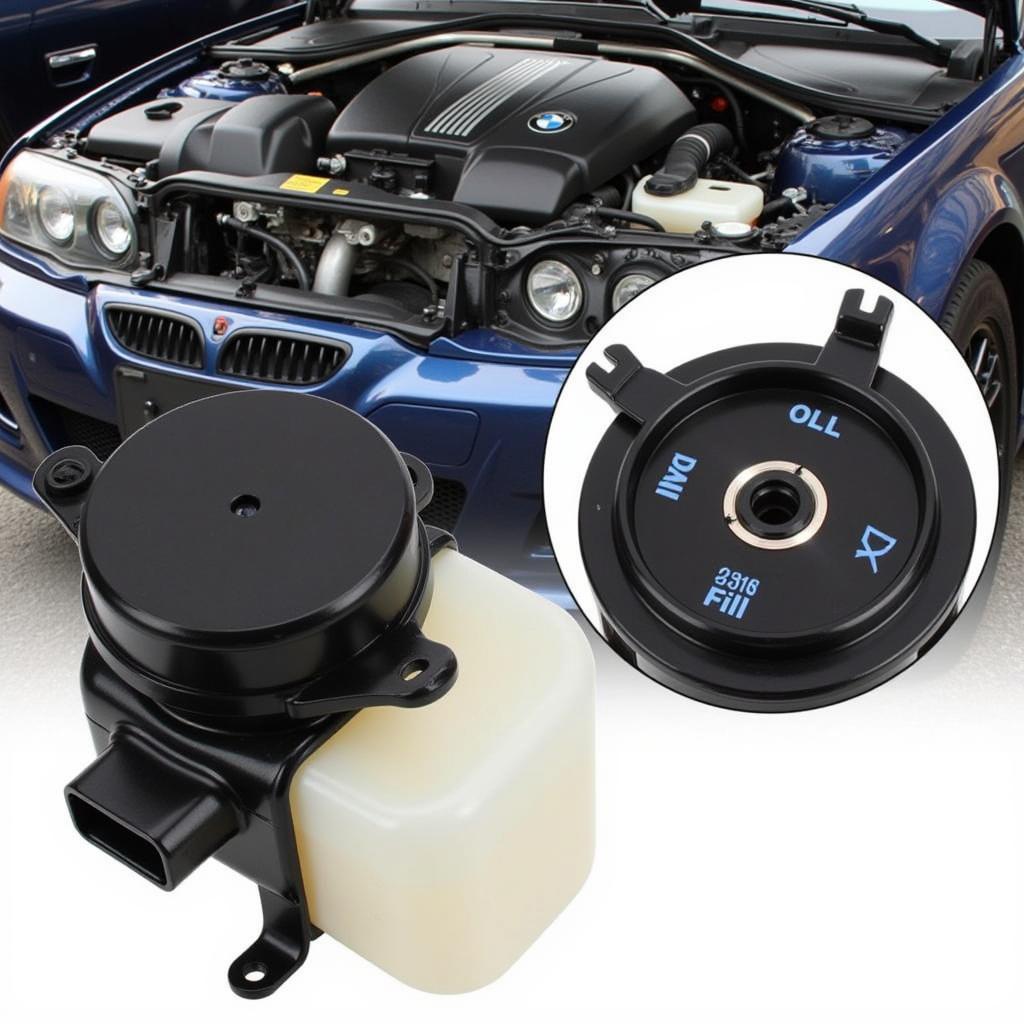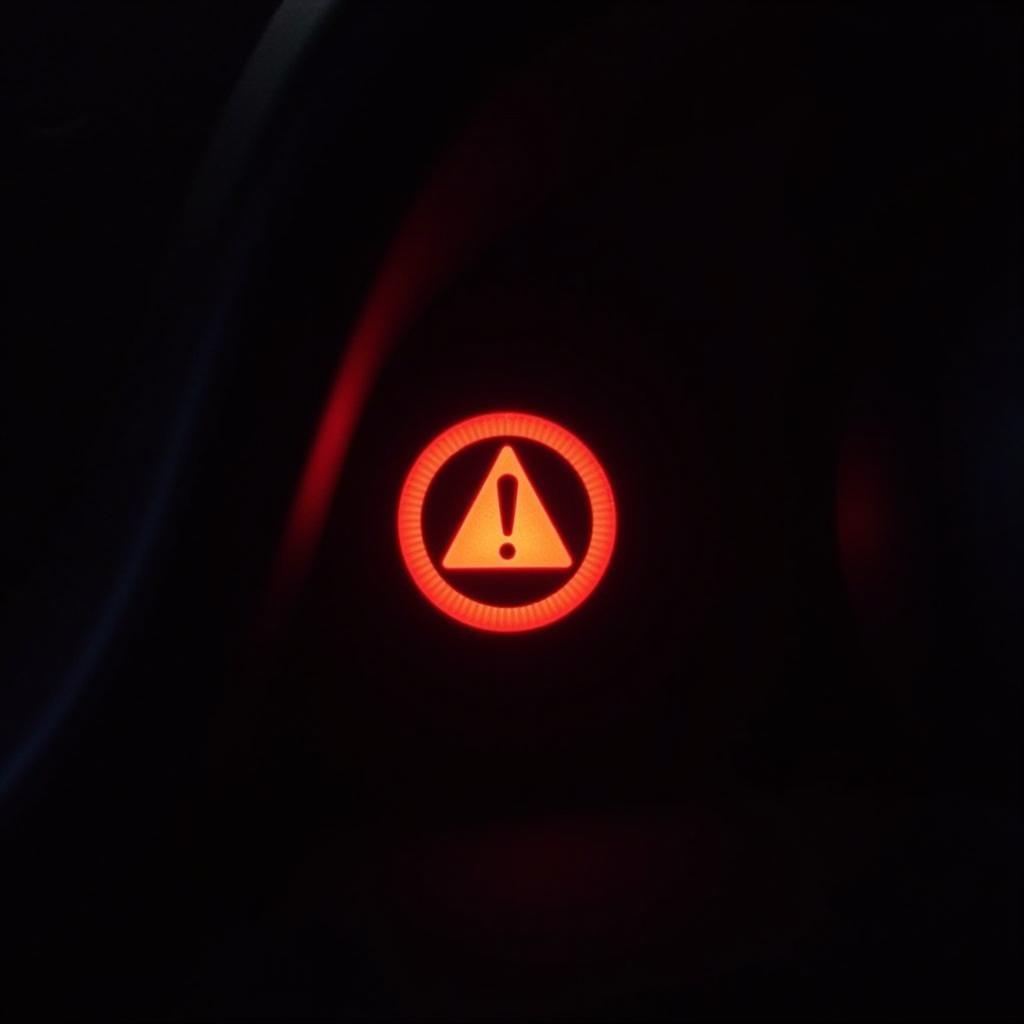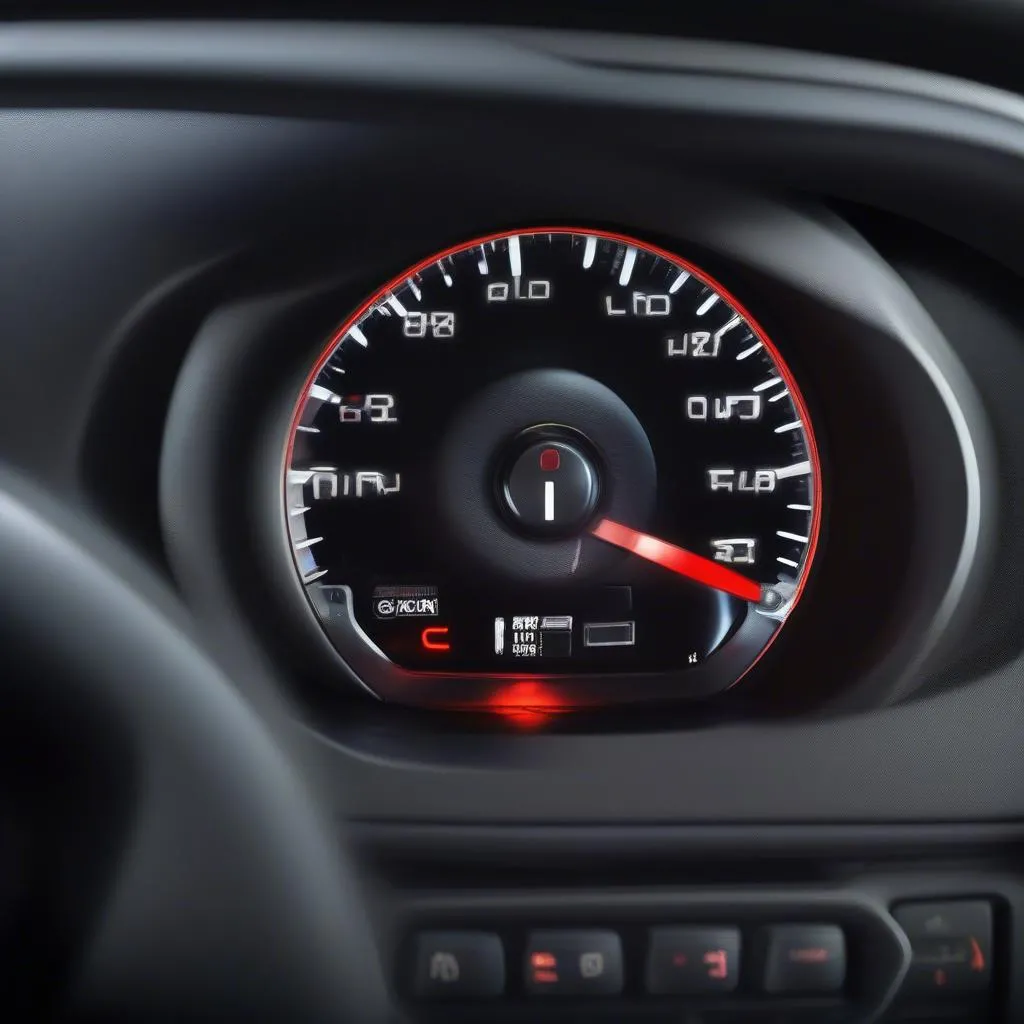The dreaded brake warning light illuminating your E46’s dashboard can be a real head-scratcher, especially when you’ve already checked and the brake sensors seem perfectly fine. This frustrating scenario is more common than you might think, and it leaves many E46 owners wondering what could be triggering the persistent warning. This guide will delve into the common causes, diagnostic procedures, and solutions for an E46 brake warning light when the sensors appear to be functioning correctly.
Beyond the Sensors: Unraveling the E46 Brake Warning Mystery
While faulty brake sensors are a frequent culprit, they aren’t the only reason your E46 might be flashing that warning light. Several other factors can trigger this issue, ranging from low brake fluid levels to more complex problems within the braking system. Don’t panic! With a systematic approach, you can pinpoint the root cause and get your E46 back on the road safely. e46 brake warning lights can be tricky, but we’ll guide you through it.
Low Brake Fluid: The Usual Suspect
One of the first things to check is your brake fluid level. Low brake fluid is often the simplest explanation for an illuminated brake warning light. The brake system is a closed hydraulic system, and a drop in fluid level could signal a leak or worn brake pads.
- Check the Reservoir: Locate the brake fluid reservoir under the hood and check the fluid level against the minimum and maximum markers.
- Top Up if Necessary: If the level is low, carefully add the correct type of brake fluid. However, simply topping up the fluid won’t solve the underlying problem if there’s a leak.
 Checking the Brake Fluid Reservoir in an E46
Checking the Brake Fluid Reservoir in an E46
Brake Pad Wear Sensor Issues
Even if your brake pads have sufficient life left, a malfunctioning wear sensor can trigger the warning light. While you mentioned the sensors are fine, it’s important to verify they are correctly connected and free of damage. Sometimes, a loose connection or a frayed wire can cause intermittent issues.
- Inspect the Wiring: Carefully examine the wiring leading to the brake pad wear sensors for any signs of damage or disconnection.
- Test the Sensors: A multimeter can be used to test the continuity of the brake pad wear sensors.
“Often, overlooked wiring issues can mimic sensor failures,” says automotive diagnostics expert, Michael Davies. “A thorough inspection of the wiring harness is crucial.”
ABS Control Module Malfunction: A Deeper Dive
The ABS control module is the brain of your E46’s anti-lock braking system. A faulty module can cause all sorts of unpredictable behavior, including a spurious brake warning light. brake warning light on bmw 3-series are often linked to the ABS system.
- Diagnostic Scanning: A professional-grade diagnostic scanner can communicate with the ABS module and retrieve any stored fault codes. These codes can provide valuable insights into the nature of the problem.
Troubleshooting and Solutions: Getting to the Bottom of It
What can you do if you’ve checked all the usual suspects and the brake warning light persists? how to reset bmw brake warning light is a common search, but addressing the root cause is essential.
- Professional Diagnosis: If you’re unsure about tackling this issue yourself, it’s best to consult a qualified BMW specialist. They have the necessary tools and expertise to diagnose and resolve complex braking system problems.
- DIY Approach: For the more technically inclined, a systematic approach using a diagnostic scanner and wiring diagrams can help isolate the problem. Remember to consult reliable repair manuals for your specific E46 model. bmw 3 series reset brake warning light guides can be helpful.
- Remote Diagnostics and Software Solutions: In some cases, remote diagnostic services can offer a convenient and cost-effective solution. bmw e46 yellow brake warning light can sometimes be resolved remotely through software updates or coding adjustments.
“Remote diagnostics and software updates are becoming increasingly valuable in modern automotive repair,” adds Sarah Chen, a leading automotive software engineer. “They can often save time and money by addressing software-related issues without requiring a physical visit to the workshop.”
Conclusion: Keeping Your E46 Stopping Power in Top Shape
A persistent e46 brake warning on, even when the sensors are fine, shouldn’t be ignored. By systematically checking the common culprits outlined in this guide, you can identify the root cause and get your E46 braking system back in top condition. Don’t hesitate to seek professional assistance if needed.
FAQ
- Can I drive my E46 with the brake warning light on? It’s not recommended. The warning light indicates a potential problem with your braking system, and continuing to drive could compromise your safety.
- How much does it cost to fix an E46 brake warning light issue? The cost can vary depending on the underlying cause. A simple brake fluid top-up might be inexpensive, while a faulty ABS module replacement could be significantly more costly.
- Can a low battery cause the brake warning light to come on? While uncommon, a severely low battery can sometimes cause erratic behavior in the car’s electrical systems, potentially triggering warning lights.
- How often should I check my brake fluid level? It’s good practice to check your brake fluid level at least once a month.
- What type of brake fluid should I use in my E46? Consult your owner’s manual for the recommended brake fluid type for your specific model year.
- Can I reset the brake warning light myself? While it’s sometimes possible to reset the warning light, it’s crucial to address the underlying problem first. Simply resetting the light without fixing the issue won’t solve the problem and could be dangerous.
- What are the symptoms of a faulty ABS module? Symptoms can include erratic ABS behavior, a persistent brake warning light, and difficulty braking effectively.


